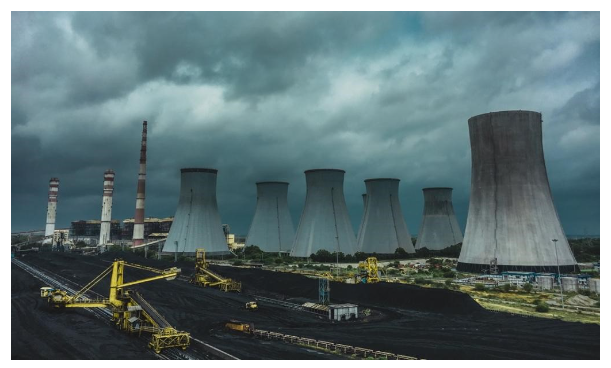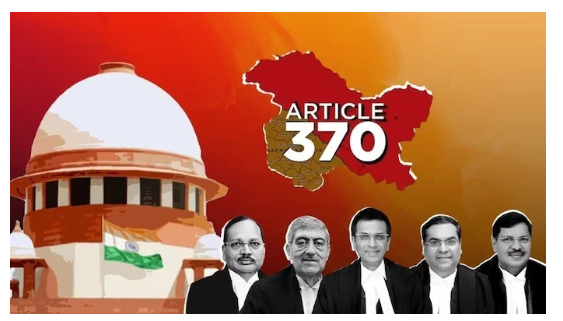Monday, 18th December 2023
Global Partnership on Artificial Intelligence (GPAI) Summit
In News: The Global Partnership on Artificial Intelligence (GPAI) Summit was officially launched by the Prime Minister of India.

Key Highlights of the GPAI Summit
- Inaugural Address by Indian Prime Minister
- The Prime Minister of India delved into the national AI portal, spotlighting the AIRAWAT initiative and expressing concerns about potential deep fake technology misuse.
- YUVAi Showcased at GPAI Summit
- YUVAi took center stage, featuring winners and start-ups presenting their AI models and solutions during the GPAI Summit.
- AI for Digital Inclusion
- The Prime Minister advocated for using AI to provide digital services in local languages, aiming to enhance digital inclusion.
- Thematic Sessions at GPAI Summit
- Responsible AI, data governance, future of work, and innovation and commercialization were the focal themes of distinct sessions at the GPAI Summit.
- Diverse Side Events
- The summit comprised various side events, including industry panel discussions, workshops, research symposiums, hackathons, and the Global AI Expo.
Delhi Declaration of the GPAI
It recognizes the imperative to seize emerging opportunities and address the associated risks stemming from the development, deployment, and utilization of Artificial Intelligence (AI)
- Commitment to Democratic Values
- Affirms the commitment to uphold human dignity, human rights, and democratic values in the realm of AI.
- Principles of Trust and Transparency
- Emphasizes fostering trust, transparency, accountability, and inclusiveness as key principles in the development and deployment of AI.
- AI's Contribution to Global Challenges
- Recognizes AI's potential to contribute to the United Nations Sustainable Development Goals and address global challenges.
- International Cooperation on AI
- Encourages collaboration and coordination among nations on AI research, innovation, and policy.
- Comprehensive Framework for Trusted AI
- Supports the development of a comprehensive framework with shared principles for ensuring safe and trusted AI.
- Global Digital Public Infrastructure Repository (GDPIR)
- Endorses India's proposal to establish and maintain GDPIR, a repository for sharing digital public goods.
- AI Governance and Ethics Dialogue
- Calls for continued dialogue among stakeholders on AI governance and ethics.
Understanding Artificial Intelligence (AI)
AI refers to the ability of a computer or robot, controlled by a computer, to perform tasks that typically require human intelligence and judgment.
- AI Capabilities
- While no AI can match the broad capabilities of an ordinary human, specific AI applications can rival humans in particular tasks.
- Ideal AI Characteristics
- The ideal AI possesses the ability to rationalize and take actions that optimize the chances of achieving a specific goal. Machine Learning (ML) is a subset of AI.
- Deep Learning in AI
- Deep Learning (DL) techniques enable automatic learning through the absorption of vast amounts of unstructured data, such as text, images, or video.
About AIRAWAT
NITI Aayog proposed the establishment of AIRAWAT, a cloud computing platform, in 2019 to advance India's leadership in AI across various sectors.
- Government's AI Transformation Goals
- Creating a cloud computing platform aligns with the government's vision to position India as a frontrunner in AI, transforming areas like education, health, agriculture, urbanization, and mobility.
Understanding DeepFake
Deepfakes are synthetic media produced using AI to manipulate or generate visual and audio content with the intent to deceive or mislead.
- Generative Adversarial Networks (GANs)
- Deepfakes are crafted through GANs, involving a generator creating fake content and a discriminator distinguishing between real and fake content.
- Data Requirements for DeepFake
- Deepfakes necessitate a large dataset, often collected without consent from the internet or social media, to create realistic content.
- Part of Deep Synthesis
- Deepfakes are part of Deep Synthesis, which deploys technologies like deep learning and augmented reality to generate virtual scenes.
YUVA Ai Initiative
The National e-Governance Division partnered with Intel India to launch YUVAi, aiming to equip school students with AI skills and foster human-centric designers and users of AI.
- Program Objectives
- YUVAi seeks to deepen understanding, equip students with relevant skills, and empower them to use AI to address critical problems and contribute to inclusive development.
- Ongoing Year-Round Program
- The program runs throughout the year, providing students ample opportunities to empower themselves and become future-ready.
Conclusion
- GPAI Summit Launch in India
- India initiated the GPAI Summit, emphasizing the empowerment of school students with AI skills for inclusive development.
- New Delhi Declaration Highlights
- The New Delhi Declaration underscores the importance of a global AI framework grounded in democracy, human rights, and responsible practices.
|
UPSC Previous Year Questions Prelims (2020) Q. With the present state of development, Artificial Intelligence can effectively do which of the following?
Select the correct answer using the code given below: (a) 1, 2, 3 and 5 only Ans: (b) Prelims (2018) Q. The terms ‘WannaCry, Petya and EternalBlue’ sometimes mentioned in the news recently are related to (a) Exoplanets Ans: (c) Mains (2022) Q. What are the main socio-economic implications arising out of the development of IT industries in major cities of India? Mains (2020) Q. “The emergence ofthe Fourth Industrial Revolution (Digital Revolution) has initiated e-Governance as an integral part of government”. Discuss. |
Source: PIB
Continuation of Coordinated Intense Rainfall in Evolving Climates
In News: A recent AGU study highlights significant changes in the Indian Monsoon due to Global Warming.
Rainfall Trends in India
- Consistent Geographical Concentration
- Despite increased variability in Indian Summer Monsoon Rainfall (ISMR) over the past century, extreme rainfall events consistently concentrate in Central India (CI) from West Bengal and Odisha to Gujarat and Rajasthan, maintaining this pattern since 1901.
- Stability in Spatial Corridor
- The identified corridor for extreme rainfall events in CI has remained unchanged, indicating a stable synchronization pattern despite overall increased variability in ISMR.
- Network Cohesiveness in CI
- A persistent network of interconnected extreme rainfall hubs in CI demonstrates strong local connections, emphasizing stable synchronization of extreme events over the long term.
- Correlation with Climatic Patterns
- ISMR correlates with El Niño Southern Oscillations (ENSO), with heightened synchronization during strong El Niño periods and reduced synchronization during La Niña conditions.
- Implications for Predictability
- Understanding the persistent nature of extreme rainfall synchronization in CI is crucial for predicting synchronous extremes, informing effective adaptation strategies and risk management during the monsoon season.
Forecast Implications
The study challenges the belief that stationary elements in climate systems no longer exist due to global warming, highlighting consistent patterns like synchronized extreme rainfall events.
- Insights into Corridor Dynamics
- Identification of a geographic corridor as the trapping zone for synchronized extreme rainfall events provides vital insights for more accurate forecasts.
- Strategic Forecast Improvement
- Improving forecasts of synchronized extreme rainfall events may not require increased model resolution or higher computational costs.
- Instead, understanding synchronization dynamics within existing models can lead to more accurate predictions.
- Risk Reduction Strategies
- Accurate forecasts of large-scale extreme rainfall events are essential for minimizing risks across sectors.
- Refining risk reduction strategies based on improved forecasts enhances preparedness and mitigation.
- Leveraging India's Resources
- The study underscores India's modeling capacity and computational resources, positioning the country to exploit its potential for better forecasting and understanding synchronization dynamics.
Factors Affecting the Indian Monsoon
- Role of the Himalayan Mountains
- The Himalayas play a crucial role in forming monsoon winds by creating a low-pressure system, drawing warm, moist air from the Indian Ocean during the summer months
- Impact of the Thar Desert
- The Thar Desert acts as a rain shadow, receiving minimal rainfall due to the Aravalli Mountain range barrier.
- The hot and dry air creates a low-pressure zone, drawing moisture-laden winds from the Indian Ocean, resulting in summer rainfall.
- Contribution of the Indian Ocean
- The Indian Ocean contributes significantly to the formation of monsoon winds by interacting with the low-pressure system over the Indian subcontinent, leading to the development of the monsoon winds.
|
UPSC Previous Year Questions Prelims (2017) Q. With reference to ‘Indian Ocean Dipole (IOD)’ sometimes mentioned in the news while forecasting Indian monsoon, which of the following statements is/are correct?
Select the correct answer using the code given below: (a) 1 only Ans: (b) Explanation:
Mains (2015) Q. How far do you agree that the behaviour of the Indian monsoon has been changing due to humanizing landscape? Discuss. |
Source: TH
E-cigarettes - Edukemy Current Affairs
In News: Immediate measures are essential to safeguard children and curb the initiation of e-cigarette use said WHO

Understanding e-Cigarettes
- Definition of e-Cigarettes
- Electronic cigarettes, or e-Cigarettes, are battery-powered devices designed to heat a liquid into an aerosol for inhalation and exhalation.
- Composition of e-Cigarette Liquid
- The liquid used in e-cigarettes typically includes nicotine, propylene glycol, glycerin, flavorings, and other chemicals.
Concerns Regarding e-Cigarettes
- Nicotine Addiction
- The presence of nicotine in e-cigarettes raises concerns about addiction, especially among the youth.
- Health Hazards for Specific Groups
- e-Cigarettes pose health hazards for youth, young adults, and pregnant women.
- Metals and Chemicals in Aerosols
- Aerosols from some Electronic Nicotine Delivery Systems (ENDS) contain metals like lead, chromium, and nickel, as well as chemicals like formaldehyde, with concentrations comparable to or exceeding traditional cigarettes.
- Lack of Awareness and Accessibility
- Limited awareness of the negative effects of nicotine, coupled with easy accessibility, increases the susceptibility of youth to addiction.
- Non-Registration as Nicotine Replacement Therapy
- e-Cigarettes are not registered as nicotine replacement therapy products in India.
Arguments Against the Ban
- Selective Ban Concerns
- The legality of traditional cigarettes and related products in India raises questions about the arbitrary nature of selectively banning e-cigarettes.
- Regulation and Taxation Approach
- Advocates for regulating and taxing e-cigarettes as "sin goods" argue for discouraging use, rather than an outright ban.
- Safety Claim and Tobacco Industry Ties
- Supporters of e-cigarettes highlight their safety claims compared to traditional cigarettes and assert that the ban reveals a nexus between tobacco companies and the government.
- Lessons from Alcohol Prohibition
- Drawing parallels with alcohol prohibition, opponents argue that a total ban may lead to an underground economy for sin goods.
- Revenue Generation Potential
- Considering the economic aspects of "sin goods," e-cigarettes are seen as a significant revenue source for public exchequers.
Arguments in Favor of Ban
- Public Health Imperative
- Smoking-related diseases pose significant public health challenges, and recent deaths in the US due to vaping-related lung disease underscore the need for the ban.
- Challenge to Socio-Cultural Justification
- The notion of vaping as a socio-cultural phenomenon is challenged, emphasizing the need to address public health concerns.
- Nicotine Addiction and Carcinogenicity
- e-Cigarettes are identified as a direct source of highly addictive nicotine, potentially more addictive than cocaine, and nicotine in its pure form is considered carcinogenic.
- Global Tobacco Industry Shift
- Contrary to allegations of industry-government nexus, the global tobacco industry sees e-cigarettes as a lucrative avenue, dispelling claims of collusion.
- Effectiveness of Total Ban
- The ban is seen as effective for e-cigarettes with a relatively small customer base, mainly in urban areas, distinguishing it from traditional cigarettes.
- Economic Considerations and Public Health Expenditure
- Arguments about revenue loss are refuted, emphasizing that e-cigarettes, not manufactured in India, won't cause financial loss.
- Additionally, public health costs may exceed revenues from sin goods.
The Way Forward
- Sustaining Decline in Tobacco Consumption
- Acknowledging the steepest decline in tobacco consumption in India, the ban on e-cigarettes is seen as a step towards maintaining this positive trend.
- Correcting Historical Mistakes
- Viewing tobacco use as a historical mistake, there is an opportunity to correct it and protect the next generation from the harmful tobacco industry and its evolving products.
- Government's Decision for an Addiction-Free Society
- The government's choice to ban e-cigarettes is seen as a progressive step toward fostering a society free from addiction.
Source: WHO
Green Hydrogen Projects and SEZs
In News: The Indian government is contemplating regulatory amendments that could offer financial incentives to renewable energy projects producing green hydrogen within Special Economic Zones (SEZs).

Key Proposed Amendments
- Expansion of SEZs for Green Hydrogen Projects
- The Ministry of Commerce is considering allowing Special Economic Zones (SEZs) to encompass multiple non-contiguous areas, specifically tailored for green hydrogen initiatives.
- The current requirement of a contiguous land area of 50 hectares or more may be relaxed for such projects, accommodating the unique needs of green hydrogen development, including the placement of wind turbines at considerable distances
- Eligibility for Fiscal Benefits
- The proposed amendment aims to extend fiscal benefits to renewable energy plants utilized for captive consumption within SEZs.
- Currently, fiscal benefits within SEZ rules are granted only to renewable energy plants designated as SEZ units selling power outside of SEZs.
- The suggested changes would make it possible for export-oriented green hydrogen ventures to access tax breaks for establishing and operating renewable energy facilities dedicated to green hydrogen production.
Understanding Special Economic Zone (SEZ)
- Definition and Types of SEZs
- A Special Economic Zone (SEZ) is a designated geographical region with economic laws more liberal than a country's domestic economic laws.
- It encompasses various zone types, including Free Trade Zones (FTZs), Export Processing Zones (EPZs), Free Zones (FZs), and Industrial Estates (IEs).
- SEZs in India
- The SEZ Policy in India, introduced in April 2000, aims to boost foreign investment, employment, and provide a competitive environment for exports.
- India, a pioneer in Asia, established its first EPZ in Kandla, Gujarat, in 1965.
- SEZs in India operate under the SEZ Act of 2005 and SEZ Rules of 2006, adhering to all national laws unless exempted. Each zone is overseen by a Development Commissioner and is subject to the SEZ Act and Rules.
- Units within SEZs may engage in manufacturing, trading, or service activities.
|
UPSC Previous Year Questions Prelims (2023) Q. With reference to green hydrogen, consider the following statements:
How many of the above statements are correct? (a) Only one Ans: (c) |
Source: IE
Binsar Wildlife Sanctuary - Edukemy Current Affairs
In News: A recent sighting marks the first-ever presence of a tiger at Binsar Wildlife Sanctuary.

About Binsar Wildlife Sanctuary: An Overview
- Geographical Location
- Situated in the Almora district of the Kumaon region in Uttarakhand, Binsar Wildlife Sanctuary, established in 1988, holds historical significance as the former summer capital of the Chand dynasty, rulers of Kumaon from the 11th to the 18th centuries AD.
- Namesake and Elevation
- Named after Bindeshwar Mahadev Temple, an ancient Hindu rock temple dedicated to Lord Shiva atop the sanctuary's highest point, Binsar covers approximately 45.59 sq km, reaching an elevation of 2500 m.
- Scenic Views
- Offering awe-inspiring panoramic vistas, Binsar treats visitors to breathtaking views of snow-capped Himalayan peaks such as Chaukhamba, Nanda Devi, Nanda Kot, Panchachuli, and Kedarnath.
- Flora of Binsar Wildlife Sanctuary
- Diverse Vegetation
- The sanctuary boasts diverse vegetation, with rhododendrons and oaks dominating higher altitudes, while pines thrive at lower elevations.
- Botanical Variety
- Binsar hosts a rich array of flora, including 25 tree types, 24 varieties of bushes, and seven kinds of grass.
- Diverse Vegetation
- Fauna in Binsar Wildlife Sanctuary
- Rich Biodiversity
- Home to a variety of wildlife, Binsar is inhabited by wild boars, deer, monkeys, black bears, porcupines, mountain goats, red foxes, jackals, pine martens, and leopards.
- Avian Diversity
- Notably, Binsar is a birdwatcher's paradise, with over 200 species of birds. Designated an 'Important Bird Area (IBA)' by BirdLife International, the sanctuary is home to rare bird species like the Forktail and Blackbird.
- Rich Biodiversity
Source: ZN
Vijay Diwas - Edukemy Current Affairs
In News: Leaders from various political backgrounds paid homage to the soldiers who fought in the 1971 war on the occasion of the 52nd Vijay Diwas recently.
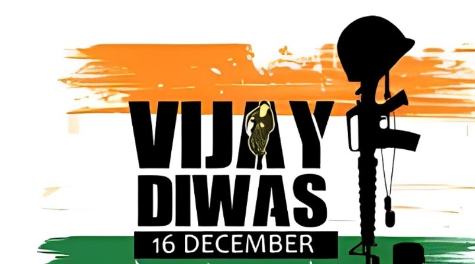
About Vijay Diwas
- Vijay Diwas is observed on December 16 each year to commemorate the Indian armed forces' victory over Pakistan in the 1971 war and honor the sacrifices of soldiers.
- The day also marks Bangladesh's Victory Day, celebrating its formal independence from Pakistan.
- The conflict arose from the oppressive actions of the Pakistani military regime in East Pakistan after the 1970 elections.
- India intervened, and after a 13-day battle, achieved a significant triumph on December 16, 1971, leading to the creation of Bangladesh.
- General Sam Manekshaw, the Indian Chief of the Army Staff during the war, played a crucial role in India's victory and was later promoted to the rank of field marshal.
Source: IE
Austropallene halanychi - Edukemy Current Affairs
In News: A new species of sea spider, identified as Austropallene halanychi, has been recently uncovered by scientists.
About Austropallene halanychi
A peculiar spider, distinguished by its unusual yellow body color, was discovered near the Antarctica Ocean. This arachnid, with four nearly black eyes and distinctive large claws, belongs to the sea spider family and shares a distant relation with horseshoe crabs.

Noteworthy Features:
- Unique Eating Method
- The sea spider displays an uncommon method of consuming food. Instead of using its mouth, it utilizes a straw-like proboscis for feeding.
- Unusual Respiration
- Unlike conventional respiratory methods, this species breathes through its legs, adding to its distinctive characteristics.
- Large Boxing Glove-Like Claws
- Sporting large claws resembling "boxing gloves," the spider is presumed to use them for securing soft prey such as anemones and worms.
- Habitat and Discovery
- Discovered in the Ross Sea, submerged approximately 1,870 feet (570 meters) below the surface, this species showcases its uniqueness in the Antarctic environment.
Key Points about Ross Sea
- Situated just 320 kms from the South Pole, the Ross Sea is a colossal bay covered by the expansive Ross Ice Shelf, Antarctica's largest. Designated as the first protected area in Antarctica, it serves as a habitat for numerous penguin and whale species.
- The sea's distinct ecosystem, influenced by the coastal East-Wind Drift, positions it as one of the last remaining marine ecosystems globally, housing diverse wildlife like penguins, seals, Antarctic toothfish, and whales.
Source: WION
Frontotemporal Dementia (FTD) - Edukemy Current Affairs
In News: An international team of researchers has identified a protein called TAF15 in the brains of individuals with frontotemporal dementia (FTD).
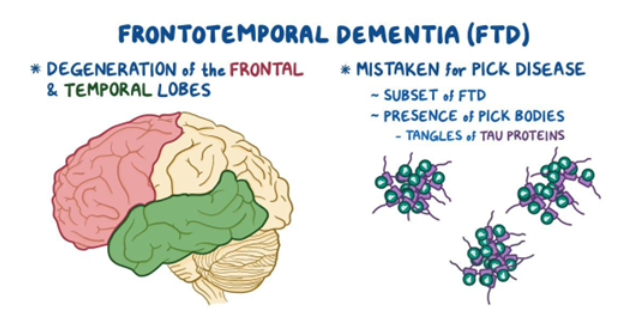
About Frontotemporal Dementia (FTD)
- Frontotemporal Dementia (FTD) is a rare form of dementia characterized by behavioral and language difficulties.
- It primarily affects the front and sides of the brain, causing gradual changes and damage to mental abilities.
- The exact cause of FTD is unknown, but certain subtypes are associated with gene mutations, and some individuals may exhibit abnormal protein structures called Pick bodies in their brain cells.
- Unlike most types of dementia that typically affect individuals over 65, FTD often begins at a younger age, with diagnoses most common in the 45-65 age range.
- Symptoms include personality and behavior changes, language problems, mental abilities issues, and memory problems.
- Physical symptoms may also emerge over time. While there is currently no cure for FTD, some treatments can help manage symptoms for a period.
Source: TN
Tax Inspectors without Borders (TIWB) Programme
In News: India has recently been designated as the Partner Administration for the Tax Inspectors Without Borders (TIWB) program, and it will contribute Tax Experts to support this initiative.
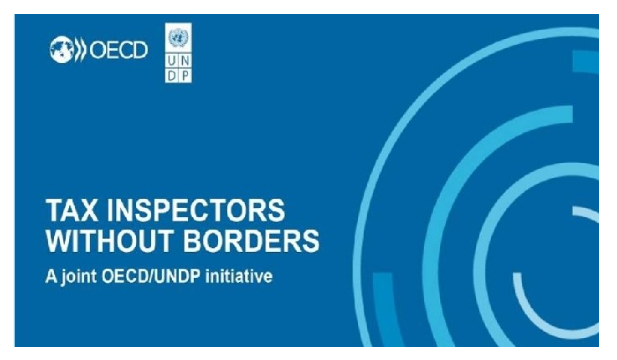
About the Tax Inspectors without Borders (TIWB) Programme
The Tax Inspectors without Borders (TIWB) Programme is a collaborative initiative between the United Nations Development Programme (UNDP) and the Organisation for Economic Cooperation and Development (OECD). Launched in 2015, its primary objective is to enhance the auditing capabilities of developing countries and promote global compliance among multinational corporations.
- Program Duration
- The TIWB Programme typically spans 12-18 months, focusing on transferring technical expertise and skills to strengthen tax administration in developing nations.
- In collaboration with the TIWB Secretariat and with support from the UNDP Country Office in Barbados and the Eastern Caribbean, India is actively involved in assisting Saint Lucia in bolstering its tax administration.
- Program Focus
- The program emphasizes the effective utilization of automatic exchange of information under the Common Reporting Standard (CRS) framework. By facilitating the transfer of knowledge and best practices, TIWB aims to contribute to the domestic resource mobilization efforts of developing countries.
About the Organisation for Economic Cooperation and Development (OECD)
The OECD is an international organization consisting of 38 member countries committed to principles of democracy and market economies. Established on December 14, 1960, by 18 European nations, the United States, and Canada, the organization's mission is to shape policies that foster prosperity, equality, opportunity, and well-being globally.
Key Points about OECD
- Goal: The OECD's overarching goal is to influence policies that support prosperity and well-being for all while promoting equality and opportunity.
- Membership: Its members typically comprise democratic nations that endorse free-market economies.
- Publications: The OECD publishes economic reports, statistical databases, analyses, and forecasts, providing insights into the outlook for global economic growth.
- Headquarters: The organization is headquartered in Paris, France.
Source: PIB
The MH-60 Romeo Helicopter - Edukemy Current Affairs
In News: Lockheed Martin has delivered the Indian Navy's sixth MH-60R "Romeo" helicopter in recent developments.

About The MH-60 Romeo Helicopter
- The MH-60 Romeo Helicopter, crafted by U.S. defense major Lockheed Martin, stands as the world's most advanced maritime helicopter, serving as the primary anti-submarine and surface warfare helicopter for the U.S. Navy.
- It is meticulously designed for versatile land and maritime operations, featuring cutting-edge avionics and sensors.
- Manufactured by Lockheed Martin, the all-weather helicopter is equipped for various missions, including anti-submarine warfare (ASW), anti-surface warfare (ASuW), search-and-rescue (SAR), naval gunfire support (NGFS), surveillance, communications relay, logistics support, personnel transfer, and vertical replenishment (VERTREP).
- Operational from frigates, destroyers, cruisers, amphibious ships, and aircraft carriers, it is well-suited for both confined littoral warfare operations and open-water scenarios.
- In 2020, the Indian government placed an order for 24 MH-60 Romeo helicopters for the Indian Navy, investing over 14,000 crores.
- The delivery commenced in 2022, with completion slated for 2025.
Key Features:
- Advanced airborne active sonar, multi-mode search radar, and a nose-mounted forward-looking infrared (FLIR) turret.
- Accommodates three or four flight crews and five passengers in the cabin.
- Powered by two turboshaft engines rated at 1,425 kW.
- Maximum Speed: 267 km/h
- Range: 454 km
- Weaponry includes torpedoes, air-to-ground missiles, rockets, and crew-served guns.
- Integrated self-defense system.
Source: IS
Decoding Reservations and Caste Dynamics
In News: The article contends that reservations serve as an essential corrective step to rectify historical injustices and discrimination experienced by specific communities, which might have deprived them of equal opportunities in the past.
Reservation System in India: An Overview
- Introduction
- The reservation system in India is rooted in the historical caste system, designed to provide specific sections of the population with access to government jobs, educational institutions, and legislative seats.
- This affirmative action, commonly known as positive discrimination, addresses the historical injustices faced by certain communities due to their caste identity.
- Historical Genesis
- Originally conceived in 1882 by William Hunter and Jyotirao Phule, the formal caste-based reservation system emerged in 1933 with the introduction of the 'Communal Award' by British Prime Minister Ramsay Macdonald.
- Post-independence, reservations initially targeted Scheduled Castes (SCs) and Scheduled Tribes (STs).
- The Mandal Commission's recommendations in 1991 extended reservations to Other Backward Classes (OBCs).
- Recent Developments
- The Constitutional (103rd Amendment) Act of 2019 introduced 10% reservation for the "economically weaker sections" in the unreserved category, exceeding the 50% reservation cap.
Evolution of Reservation System in India
- Constitutional Framework
- Articles 15(4) and 16(4) of the Constitution empower the State and Central Governments to reserve seats for SCs and STs in government services.
- Amendments, including the 77th Amendment in 1995 and 85th Amendment in 2001, addressed reservation in promotions and consequential seniority.
- Legislative Representation
- Articles 330 and 332 provide reserved seats for SCs and STs in the Parliament and State Legislative Assemblies.
- Articles 243D and 243T extend reservation to Panchayats and Municipalities.
- Judicial Pronouncements
- Landmark cases, such as the State of Madras v. Smt. Champakam Dorairajan (1951) and Indra Sawhney v. Union of India (1992), shaped reservation policies.
- The M. Nagaraj v. Union of India (2006) case established criteria for constitutionally valid reservation policies.
Need for Reservation in India
- Addressing Historical Discrimination
- Reservation seeks to rectify historical injustices and provide opportunities to communities historically marginalized due to caste-based discrimination.
- Lack of Human Development Indicators
- Disparities in education, employment, and access to resources among caste groups highlight the need for reservation to bridge these gaps.
- Promoting Social Justice
- Articles 15(4) and 16(4) reflect a constitutional commitment to promoting social justice and equality through reservation in education and public employment.
- Prevalence of Backwardness
- Recommendations of the Mandal Commission addressed the backwardness of OBCs, ensuring a more inclusive approach to reservations.
- Data and Government Reports
- Socio-economic census data, government reports like the Sachar Committee Report, and NSSO reports justify reservations by revealing disparities and backwardness in specific communities.
- Equitable Representation
- Reservation in government jobs ensures representation from all sections of society, promoting diversity and inclusivity in public services.
Issues with Reservation System in India
- Quality of Education and Employment
- Concerns exist that reservation policies may compromise the quality of education and workforce by focusing on quotas rather than merit.
- Brain Drain
- Reservation policies might contribute to a "brain drain," where talented individuals seek opportunities abroad to avoid the reservation system.
- Resentment and Division
- Reservation can create social and economic divisions, fostering resentment among those not benefiting from the policies.
- Inefficiencies and Corruption
- Issues of inefficiency, corruption, and caste certificate manipulation undermine the effectiveness of the reservation system.
- Ghost Beneficiaries
- Broad categories may not accurately target the most disadvantaged individuals, leading to inefficiencies in reaching the intended beneficiaries.
- Stigma and Stereotyping
- Reservation may result in stigmatization and stereotyping, impacting the self-esteem of individuals from reserved categories.
- Economic vs. Social Development
- While addressing social development, reservation policies may not directly tackle economic disparities.
- Political Exploitation
- Reservation policies are sometimes politically exploited, focusing on short-term gains rather than long-term development.
Potential Solutions to Reservation Challenges
- Reboot Infrastructure of Opportunity
- Focusing on education, employability, and employment reforms can accelerate progress by addressing performance management, governance, and skills development.
- Equal Treatment
- Ensuring fair treatment and avoiding discrimination based on background promotes equality.
- Unbiased Competition
- Encouraging competition on a level playing field fosters excellence based on skills and efforts.
- Impartially Judged Outcomes
- Evaluation based on merit, performance, and contributions ensures fair and impartial outcomes.
- Judging Based on Effort and Courage
- Emphasizing hard work, determination, and the courage to pursue goals promotes individual responsibility.
- Judicious Resource Use
- Efficient utilization of resources for subsidized food, education, healthcare, and housing must be balanced with individual responsibility.
Conclusion
- Philosophical Reflection
- Rooted in Gandhiji's vision of Sarvodaya through Antyodaya, the reservation system is a tool for social justice.
- However, there's a call to move beyond political manipulations toward a more universal approach.
- Call for Change
- After years of striving for Poorna Swaraj, it's time to reconsider reservation, often subject to political maneuvers, for a more universally applicable system over the next few decades.
|
UPSC Previous Year Questions Mains (2018) Q. Whether the National Commission for Scheduled Castes (NCSC) can enforce the implementation of constitutional reservation for the Scheduled Castes in the religious minority institutions? Examine. |
Source: IE
Share the article
Edukemy’s Current Affairs Quiz is published with multiple choice questions for UPSC exams
MCQ
Get Latest Updates on Offers, Event dates, and free Mentorship sessions.

Get in touch with our Expert Academic Counsellors 👋
FAQs
UPSC Daily Current Affairs focuses on learning current events on a daily basis. An aspirant needs to study regular and updated information about current events, news, and relevant topics that are important for UPSC aspirants. It covers national and international affairs, government policies, socio-economic issues, science and technology advancements, and more.
UPSC Daily Current Affairs provides aspirants with a concise and comprehensive overview of the latest happenings and developments across various fields. It helps aspirants stay updated with current affairs and provides them with valuable insights and analysis, which are essential for answering questions in the UPSC examinations. It enhances their knowledge, analytical skills, and ability to connect current affairs with the UPSC syllabus.
UPSC Daily Current Affairs covers a wide range of topics, including politics, economics, science and technology, environment, social issues, governance, international relations, and more. It offers news summaries, in-depth analyses, editorials, opinion pieces, and relevant study materials. It also provides practice questions and quizzes to help aspirants test their understanding of current affairs.
Edukemy's UPSC Daily Current Affairs can be accessed through:
- UPSC Daily Current Affairs can be accessed through Current Affairs tab at the top of the Main Page of Edukemy.
- Edukemy Mobile app: The Daily Current Affairs can also be access through Edukemy Mobile App.
- Social media: Follow Edukemy’s official social media accounts or pages that provide UPSC Daily Current Affairs updates, including Facebook, Twitter, or Telegram channels.


